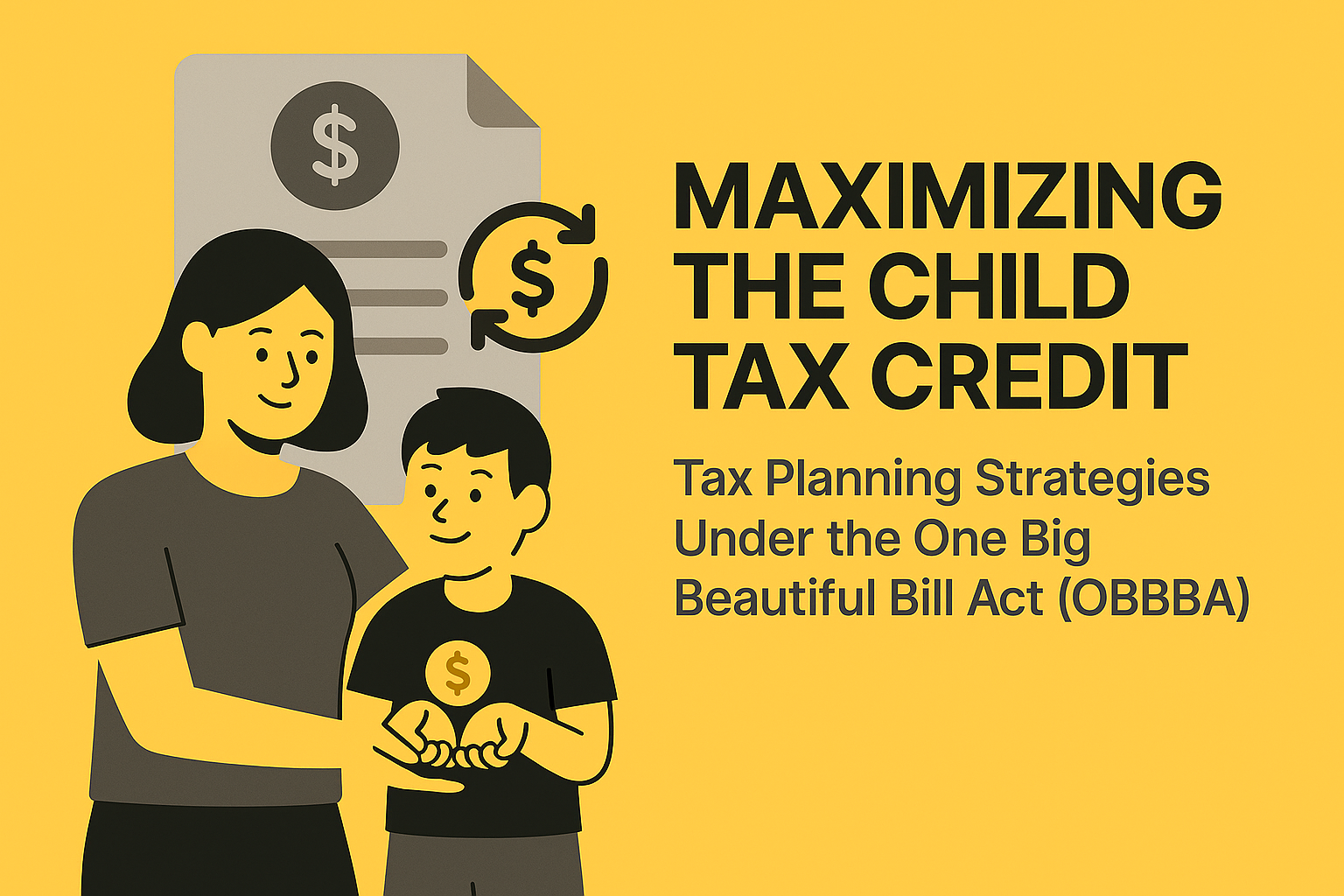With the passage of the One Big Beautiful Bill Act (OBBBA), significant changes have been made to the Child Tax Credit, providing new planning opportunities for tax and financial professionals. This blog unpacks the new OBBBA provisions, explores planning tips with the support of AI tax research and AI tax planning tools, and demonstrates how agentic AI is revolutionizing child tax credit strategy. Read on to ensure your clients maximize their credits—discover what’s new and learn how our AI tax tool can help you stay ahead.
What’s New: Child Tax Credit Under OBBBA
- Increased Credit Amount: The CTC is raised from $2,000 to $2,200 per qualifying child under age 17, effective for the 2025 tax year
- Refundable Portion: The refundable portion of the credit increases to $1,700 for 2025, providing greater benefit to families with lower tax liability.
- Income Thresholds: The credit begins to phase out at $200,000 for single filers and $400,000 for joint filers, maintaining the expanded access for middle-income families.
- Expiration and Indexing: The enhanced credit is set to expire on January 1, 2029, after which it reverts to $2,000 per child, indexed for inflation.
- Social Security Number Requirement: Both the child and taxpayer must have valid, work-eligible Social Security numbers to claim the credit.
Why Proactive Planning Matters
Even with a more generous CTC, careful planning is crucial. Here’s why:
- Income Cliffs: Credits phase out after certain AGI thresholds. AI tax planning tools can model income scenarios and avoid phaseout “cliffs.”
- Filing Status & Custody: For clients with shared custody or recent marital status changes, agentic AI in tax can help optimize which parent should claim the credit.
- Coordination With Other Credits: The expanded child and dependent care credit and earned income tax credit (EITC) may interact with the CTC. Strategic coordination means maximum benefit.
- Withholding & Estimated Payments: AI-driven tax planning can identify opportunities to adjust withholding, especially if advance CTC payments are in play.
How AI Tax Research and Agentic AI Tools Transform Child Tax Credit Planning
Modern tax planning has moved beyond spreadsheets. Here’s how our AI tax tool and AI tax research platforms deliver superior results:
- Scenario Analysis: Instantly calculate CTC outcomes based on projected AGI, dependents, and filing status.
- Regulatory Monitoring: Stay updated on IRS implementation and OBBBA changes—AI tax research tools pull directly from government and authoritative sources.
- Client Collaboration: Agentic AI in tax offers dynamic client interviews, helping professionals and families understand how choices (like changing jobs or marital status) impact CTC eligibility.
- Multi-Year Optimization: AI-driven tools model future law changes and family plans, helping you maximize credits not just this year, but for years to come.
Final Thoughts: Plan Ahead With AI-Powered Tax Intelligence
The One Big Beautiful Bill Act opens new doors for families to lower their tax bills through an enhanced Child Tax Credit. But with change comes complexity. Using AI tax tools and agentic AI in tax, you can confidently navigate the evolving landscape and deliver maximum value to your clients.
Ready to see the future of tax planning? 👉 Try our AI tax tool today or book a free demo and see how you can serve your clients with confidence, accuracy, and speed.

